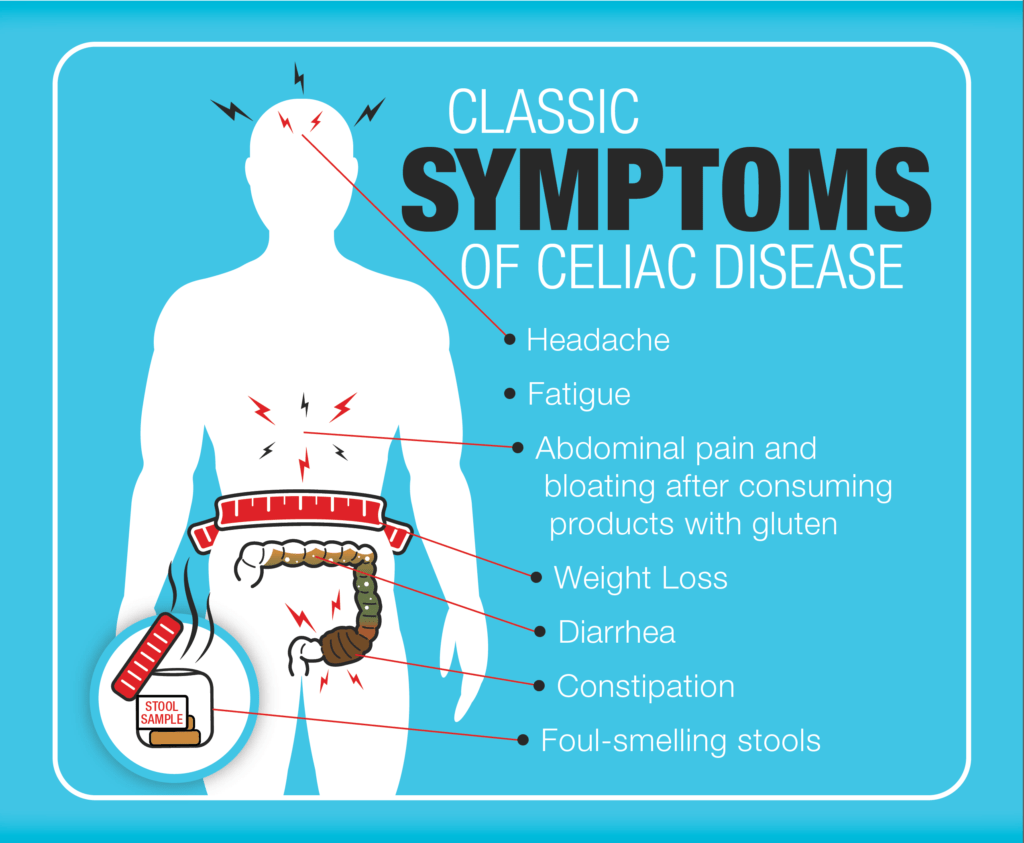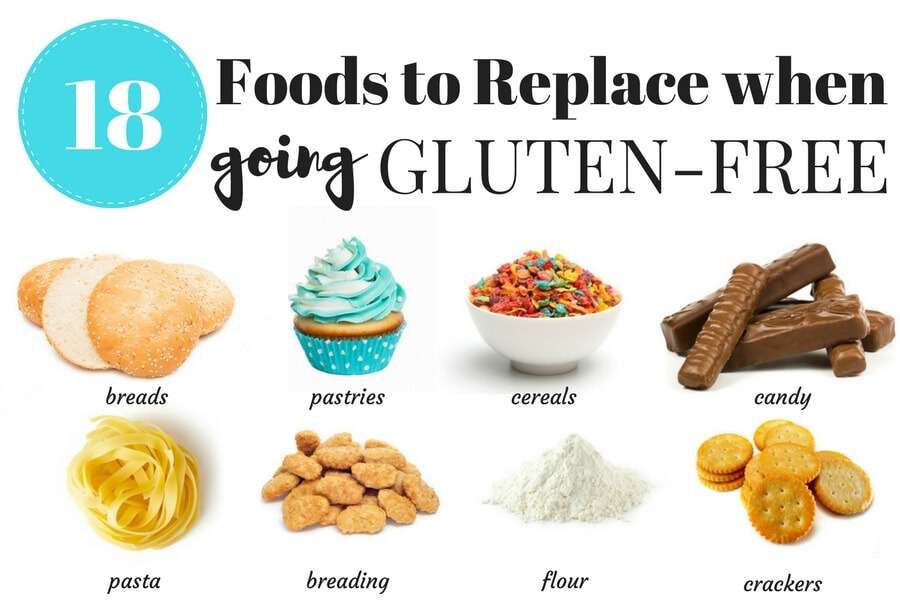Gluten-based celiac disease diet consumption triggers the autoimmune illness of celiac disease, which damages the small intestine. In those with celiac disease, gluten—a protein present in wheat, barley, and rye—sets off an immunological reaction that damages the gut lining and causes inflammation. Celiac illness can only be cured by following a rigorous gluten-free diet. The key components of a celiac disease diet, such as things to avoid, safe substitutes, nutritional considerations, and helpful hints for leading a celiac disease diet gluten-free lifestyle, will all be covered in detail in this extensive book.
Table of Contents
Understanding Celiac Disease
More than just gluten sensitivity, celiac disease is a serious autoimmune illness that, if left untreated, can have life-threatening consequences for one’s health. The small intestine’s villi are attacked by the immune system of those who have celiac disease when they ingest gluten. Damage to these villi, which are essential for vitamin absorption, can result in infertility, malnutrition, osteoporosis, and even some types of cancer.
Symptoms of Celiac Disease

Symptoms of celiac disease can vary widely among individuals, making diagnosis challenging. Common symptoms include:
- Chronic diarrhea or constipation
- Abdominal pain and bloating
- Fatigue
- Weight loss
- Anemia
- Dermatitis herpetiformis (a skin rash)
Some people may experience non-gastrointestinal symptoms such as headaches, joint pain, and cognitive issues. Because these symptoms overlap with those of other conditions, a proper diagnosis through celiac disease diet, blood tests, and an intestinal biopsy is essential.
Key Components of a Celiac Disease Diet
Foods to Avoid
To effectively manage celiac disease, it is crucial to eliminate all sources of gluten from the diet. This includes:
- Wheat includes all varieties, such as spelled, durum, and semolina.
- Barley: is often found in malt, soups, and beer.
- Rye: is commonly used in bread and rye-based products.
- Triticale: A hybrid of wheat and rye.
- Oats: are not labeled gluten-free, as they are often contaminated with gluten during processing.
Hidden Sources of Gluten
Gluten can be hidden in many processed foods and additives. It’s important to read labels carefully and be aware of common hidden sources, such as:
- Sauces and gravies: Many use wheat flour as a thickener.
- Processed meats: Some sausages and deli meats contain gluten.
- Snack foods: Chips, crackers, and flavored nuts may contain gluten.
- Condiments: Soy sauce, salad dressings, and certain mustards.
- Beverages: Beer, malt beverages, and certain flavored coffees.
Safe Gluten-Free Alternatives
While eliminating gluten from the diet might seem daunting, there are plenty of delicious and nutritious gluten-free alternatives available:
- Grains: rice, quinoa, millet, amaranth, buckwheat, and corn.
- Flours: almond flour, coconut flour, chickpea flour, and tapioca flour.
- Starches: potato starch, arrowroot, and cornstarch.
- Legumes: beans, lentils, and peas.
- Fruits and Vegetables: All fresh fruits and vegetables are naturally gluten-free.
Nutritional Considerations
Maintaining a balanced and nutritious diet is crucial for individuals with celiac disease. When eliminating gluten, it’s important to ensure an adequate intake of essential nutrients that might be lacking in a celiac disease diet due to intestinal damage or restricted food choices.
Vitamins and Minerals
- Iron: is essential for preventing anemia. Sources include lean meats, leafy greens, and gluten-free fortified cereals.
- Calcium and Vitamin D: are crucial for bone health. Sources include dairy products, leafy greens, and fortified plant-based milks.
- Fiber: is important for digestive health. Sources include fruits, vegetables, legumes, and gluten-free whole grains.
- B Vitamins: are often found in whole grains, so consider supplements or fortified gluten-free foods.
Dietary Supplements
In some cases, dietary supplements for celiac disease may be necessary to address nutritional deficiencies. Consult with a healthcare provider to determine the need for supplements such as:
- Multivitamins
- Vitamin D
- Calcium
- Iron
- Probiotics
Practical Tips for Managing a Gluten-Free Lifestyle

Reading Labels
Becoming proficient at reading food labels is essential for avoiding gluten. Look for certified gluten-free labels and be aware of potential celiac disease diet cross-contamination risks in foods that are not specifically labeled as gluten-free.
Dining Out
Eating out can be challenging, but with careful planning, it is possible to enjoy meals outside the home.
- Research: Choose restaurants that offer gluten-free menus or are known for accommodating gluten-free diets.
- Communicate: Inform the staff about your dietary celiac disease diet needs and ask about preparation methods to avoid cross-contamination.
- Choose Simple Dishes: Opt for grilled meats, salads without croutons, and steamed vegetables.
Traveling
Traveling requires extra planning to ensure gluten-free options are available.
- Pack Snacks: Bring gluten-free snacks and non-perishable meals.
- Research Destinations: Identify celiac disease diets in gluten-free restaurants and grocery stores.
- Learn Key Phrases: In non-English-speaking countries, learn how to communicate your dietary needs.
Living a Healthy, Gluten-Free Life
A gluten-free diet involves embracing a new eating style that supports overall health and wellbeing rather than merely eliminating certain items. People with celiac disease can have happy, healthy celiac disease diet by avoiding gluten and concentrating on complete, naturally gluten-free foods.
Support and Resources
Connecting with support groups and resources can be invaluable:
- Celiac Disease Foundations: Organizations like the Celiac Disease Foundation offer resources, recipes, and support.
- Online Communities: Join forums and celiac disease diet social media groups for tips and shared experiences.
- Healthcare Providers: Regular check-ups with your healthcare provider can help manage your condition and address any concerns.
Innovative Gluten-Free Recipes
One of the most exciting aspects of adopting a gluten-free diet is discovering new recipes and culinary techniques. celiac disease diet Here are a few innovative gluten-free recipes that can add variety and delight to your celiac disease diet:
Gluten-free quinoa and Veggie Stir-Fry
Ingredients:
- 1 cup quinoa
- 2 cups vegetable broth
- 1 tablespoon olive oil
- 1 onion, chopped
- 2 cloves garlic, minced
- 1 bell pepper, sliced
- 1 cup broccoli florets
- 1 cup snap peas
- 2 tablespoons gluten-free soy sauce
- 1 teaspoon sesame oil
- 1 tablespoon fresh ginger, grated
- Salt and pepper to taste
Instructions:
- Rinse quinoa under cold water. In a medium pot, bring the vegetable broth to a boil, add quinoa, reduce heat, and simmer until the liquid is absorbed (about 15 minutes).
- In a large skillet, heat olive oil and celiac disease diet over medium heat. Add onions and garlic and sauté until fragrant.
- Add bell pepper, broccoli, and snap peas to the skillet. Cook until vegetables are tender-crisp.
- Stir in cooked quinoa, soy sauce, sesame oil, and grated ginger. Mix well, and cook for another 5 minutes.
- Season with salt and pepper, to taste. Serve hot.
Gluten-Free Almond Flour Pancakes
Ingredients:
- 1 cup almond flour
- 2 large eggs
- 1/4 cup almond milk
- 1 tablespoon honey
- 1 teaspoon vanilla extract
- 1/2 teaspoon baking soda
- Pinch of salt
- Coconut oil for cooking
Instructions:
- In a large bowl, whisk together almond flour, baking soda, and salt.
- In another bowl, beat eggs and add almond milk, honey, and vanilla extract. Mix well.
- Combine the wet ingredients with dry ingredients, stirring until smooth.
- Heat a skillet over medium heat and add a small amount of coconut oil.
- Pour 1/4 cup of batter onto the celiac disease diet skillet for each pancake. Cook until bubbles form on the surface, then flip and cook until golden brown.
- Serve with fresh fruit and a drizzle of maple syrup.
Gluten-Free Chocolate Avocado Mousse
Ingredients:
- 2 ripe avocados
- 1/2 cup cocoa powder
- 1/4 cup coconut milk
- 1/4 cup honey or maple syrup
- 1 teaspoon vanilla extract
- Pinch of sea salt
Instructions:
- Cut avocados in half, remove the pit, and scoop the flesh into a food processor.
- Add cocoa powder, coconut milk, honey, vanilla extract, and sea salt.
- Blend until smooth and creamy.
- Chill in the refrigerator for at least 30 minutes before serving.
- Garnish with fresh berries or a sprinkle of coconut flakes.
Maintaining a Gluten-Free Pantry

Having a well-stocked gluten-free pantry is essential for making quick and healthy meals. Here are some staples to keep on hand:
- Gluten-Free Grains: Rice, quinoa, millet, buckwheat, and certified gluten-free oats.
- Flours and Starches: Almond flour, coconut flour, tapioca starch, and potato starch.
- Legumes: Canned or dried beans, lentils, and chickpeas.
- Nuts and seeds: almonds, chia seeds, flaxseeds, and sunflower seeds.
- Oils and Condiments: Olive oil, coconut oil, gluten-free soy sauce, and apple cider vinegar.
- Spices and Herbs: A variety of dried and fresh herbs and spices to enhance flavor without gluten.
Managing Cross-Contamination
Cross-contamination can occur when gluten-free foods come into contact with gluten-containing foods. Here, to prevent cross-contamination:
- Separate Storage: Keep gluten-free products in separate containers and storage areas.
- Dedicated Appliances: Use dedicated toasters, cutting boards, and utensils for gluten-free cooking.
- Clean Surfaces: Thoroughly clean countertops and cooking surfaces before preparing gluten-free meals.
- Labeling: Clearly label gluten-free items to avoid mix-ups.
Advances in Celiac Disease Research
Recent advancements in celiac disease research offer hope for new treatments and a better understanding of the condition. Some promising areas of research include:
- Enzyme Therapy: Researchers studying celiac disease diets are exploring enzymes that can break down gluten in the digestive tract before it causes harm.
- Vaccine Development: Efforts are underway to develop vaccines that could desensitize the immune system to gluten.
- Microbiome Studies: Investigations into the gut microbiome aim to understand its role in celiac disease and potential therapeutic interventions.
Assistance and Protest
Celiac illness can be difficult to live with, but help is available. Advocacy groups that offer helpful resources, support groups, and instructional materials are the Celiac Disease Foundation and Beyond Celiac. Interacting with celiac disease diet, these groups may provide support, allow you to exchange experiences, and keep up with the most recent advancements in the treatment of celiac disease.
In summary
It takes work to follow a celiac disease diet, but it is completely doable with the correct information and tools. People with celiac disease may have happy, healthy lives by knowing what foods to avoid, locating safe gluten-free substitutes, eating a balanced diet, and being aware of cross-contamination. Adopting a gluten-free diet expands one’s gastronomic options and increases consciousness of health and nutrition.
